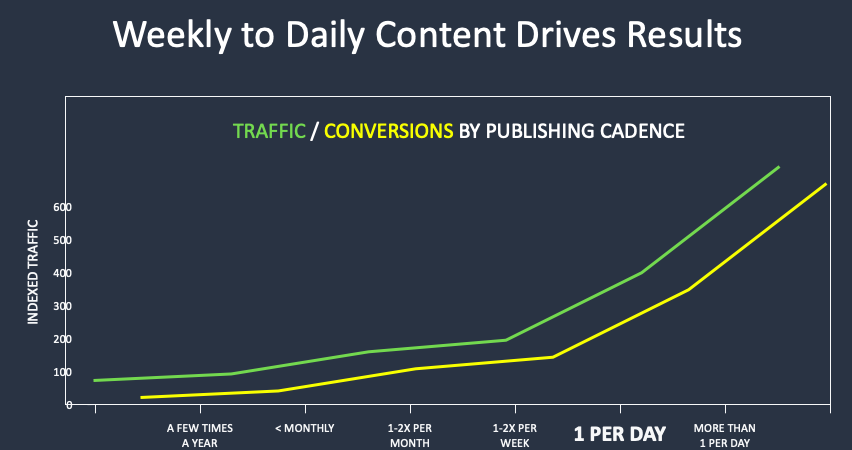Table of Contents
How Many Blog Posts to Get Traffic: Crafting a Strategy for Success
In the ever-evolving landscape of digital marketing, one question frequently arises among content creators, business owners, and bloggers alike: How many blog posts do I need to get meaningful traffic? The answer to this question is multifaceted and depends on various factors, including your content strategy, the quality of your content, and your understanding of search engine optimization (SEO). In this comprehensive guide, we’ll explore how to develop a blogging strategy that drives organic traffic, focusing on the ideal frequency of blog posts and the importance of content quality over quantity.
Understanding Your Target Audience and Content Goals
Before diving into the specifics of how many blog posts you need, it’s crucial to first understand your target audience. Who are they? What are their pain points? What type of content are they searching for? By identifying your target audience, you can tailor your content creation process to meet their needs and attract the right kind of traffic—organic traffic that converts.
The type of content you produce should align with your audience’s preferences. For instance, B2B content marketers might focus on producing long-form, authoritative content that showcases industry expertise, while B2C companies might lean towards more engaging, relatable blog posts that appeal to a broader audience. Knowing your audience’s preferences will help you create relevant content that resonates, leading to higher audience engagement and ultimately more blog traffic.
Quality Over Quantity: The Foundation of a Successful Blog
One of the most significant misconceptions in blogging is the belief that more posts automatically result in more traffic. While a higher frequency of blog posts can lead to an increase in traffic, the quality of those posts is the true driver of success. High-quality content that is valuable, relevant, and well-researched will always outperform low-quality posts, regardless of how frequently you publish.
The phrase “Quality over quantity” is more than just a mantra; it’s a guiding principle in content creation. High-quality blog posts not only rank better in search engine results but also foster trust and credibility with your audience. This is where topical authority comes into play—by consistently publishing in-depth, valuable content on relevant topics within your niche, you can establish yourself as an authority in your field, which in turn improves your search engine rankings.
Frequency of Blog Posts: How Often Should You Publish?
The next question is how often you should publish blog posts to see an increase in traffic. The answer varies depending on your goals, resources, and the competition in your niche.
For new blogs aiming to build a steady flow of traffic, a general rule of thumb is to publish at least 2-3 posts per week. This frequency allows you to create a content library quickly, which is essential for attracting both organic traffic and direct traffic. However, it’s important to maintain a consistent publishing schedule. Consistency in publishing helps search engines like Google recognize your blog as an active, reliable source of information, which can positively impact your authority with search engines.
Posts Per Week: The Ideal Frequency
For established blogs, the frequency of posts may vary. Some successful blogs, such as Neil Patel’s, maintain a consistent posting schedule of multiple posts per week, while others might post less frequently but focus on long-form content that delves deep into a specific topic. The key is to find a balance that allows you to produce high-quality content regularly without sacrificing the depth and value of your posts.

Content Strategy: Creating a Sustainable Blogging Journey
Developing a content strategy that outlines your goals, target audience, and publishing frequency is essential for a successful blogging journey. An editorial calendar can help you plan and organize your content creation process, ensuring that you have posts ready to publish on a regular basis.
Your content strategy should also consider the different types of content you want to create. For example, you might mix evergreen content with timely posts to keep your blog active and engaging. Evergreen content, which remains relevant over time, is particularly valuable for driving continuous traffic to your blog. On the other hand, timely posts can capitalize on current trends or events, attracting spikes in traffic from search engines and social media channels.
Search Engine Optimization: The Key to Organic Traffic
SEO is a critical component of any content marketing strategy. By optimizing your blog posts for search engines, you can increase your chances of ranking higher in search engine results pages (SERPs), which in turn drives more organic search traffic to your blog.
Several factors influence search engine rankings, including the use of long-tail keywords, search intent, and on-page SEO elements like internal links and external links. By conducting thorough keyword research, you can identify low-volume, low-competition keywords that are easier to rank for and still relevant to your audience. This strategy is particularly effective for new blogs that might struggle to compete for more difficult keywords.
Using tools like Google Analytics and Google Search Console, you can track your blog’s performance and adjust your SEO strategy as needed. Monitoring metrics such as monthly sessions, bounce rate, and average time on page can provide insights into how well your content is resonating with your audience and whether your SEO efforts are paying off.
Content Quality: The Cornerstone of Traffic Generation
While frequency is important, the quality of your content is the cornerstone of your blogging success. High-quality blog posts are those that offer valuable content, are well-structured, and are optimized for both search engines and the user experience.
Creating High-Quality Blog Posts
To create high-quality blog posts, consider the following tips:
- Focus on Depth: In-depth blog posts that thoroughly cover a topic are more likely to rank well in search engines and provide value to your readers. Depth blog posts also demonstrate your expertise and build your authority in your niche.
- Optimize for User Experience: Ensure your blog is easy to navigate, with fast load times and a mobile-friendly design. A good user experience encourages readers to stay on your site longer, which can positively impact your search engine rankings.
- Use Internal and External Links: Internal links help guide readers to other relevant content on your site, while external links to authoritative sources can boost your content’s credibility and improve your SEO traffic.
- Engage with Your Audience: Encourage comments, social shares, and discussions on your blog posts. Audience engagement signals to search engines that your content is valuable, which can lead to higher rankings and more organic traffic.
Content Distribution: Expanding Your Reach
Creating high-quality content is only half the battle; you also need a robust content distribution strategy to ensure your blog posts reach a wider audience. Sharing your content across social media channels, email newsletters, and guest posts on popular blogs can drive additional traffic to your blog.
Social Media Channels and Email Marketing
Leverage social media channels to share your blog content and engage with your audience. Social media shares can amplify your content’s reach and drive traffic from platforms like Facebook, Twitter, and LinkedIn. Additionally, email marketing remains a powerful tool for content distribution. By building a subscriber list and regularly sending out email newsletters with your latest posts, you can drive continuous traffic to your blog.
Content Marketing Tools and Strategies
Utilizing content marketing tools can streamline your content creation and distribution processes. Tools like Neil Patel’s Ubersuggest can help with keyword research, competitor analysis, and SEO audits, while platforms like Google Analytics provide insights into your traffic patterns and content performance.
Guest Posts and External Links: Building Authority
Writing guest posts for other blogs in your niche is an effective way to build authority and drive referral traffic to your site. When done correctly, guest posting can introduce your blog to a new audience and generate valuable backlinks, which are a significant ranking factor for search engines.
Measuring Success: Traffic and Beyond
Success in blogging isn’t solely measured by the number of posts you publish per week or month but by the results those posts generate. Monitoring your blog’s traffic, engagement, and conversion rates will provide a clearer picture of what’s working and where improvements can be made.
Google Analytics and Google Search Console
Using tools like Google Analytics and Google Search Console is essential for tracking the effectiveness of your blogging efforts. These tools can provide insights into your monthly traffic, the sources of your traffic (organic, direct, or email traffic), and how well your blog posts are performing in search engine results.
Passive Income and Monetization Strategies
As your blog grows and your traffic increases, you can explore various monetization strategies to generate passive income. Affiliate marketing, Google AdSense, and selling products or services are common ways to monetize a blog. The more traffic your blog receives, the greater your potential to earn income from ads, affiliate links, and other monetization methods.
Conclusion: A Continuous Process
Building a successful blog that attracts a steady flow of traffic is a continuous process that requires dedication, consistency, and a well-thought-out content strategy. Whether you’re publishing 2-3 posts per week or focusing on long-form, high-quality content, the key to success lies in understanding your audience, creating valuable content, and optimizing your posts for search engines.
Remember, blogging is not just about the quantity of posts but the quality and relevance of your content. By focusing on these elements and continuously refining your strategy, you can achieve exponential traffic growth and build a blog that not only attracts visitors but also converts them into loyal followers.
In your blogging journey, stay patient, keep learning, and adapt to the ever-changing digital landscape. With the right approach, your blog can become a powerful tool for driving meaningful traffic, building authority, and generating passive income.
